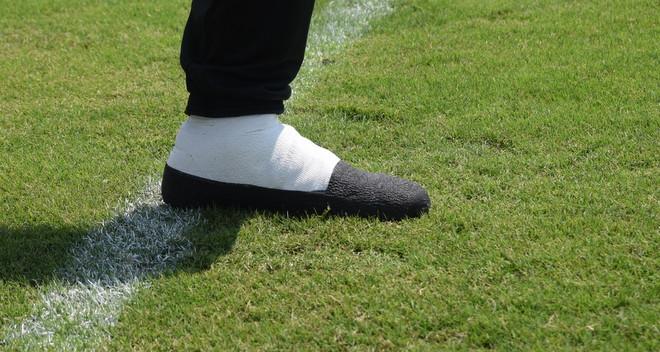

Much less research exists regarding spatting in comparison to standard taping or bracing. Athletic trainers may be reluctant to routinely spat ankles due to the time, energy, and costs involved.

Athletes sometimes request spatting because they perceive their ankles as being more supported (and hence better protected from injuries) compared to taping alone. For example, one recent study in high school football athletes found that taping and bracing were equivocal in terms of ankle sprain prevention, yet bracing was financially and logistically much more pragmatic ( 9).Īs the authors can personally attest, ankle spatting is becoming increasingly popular among college American football players and is often performed in conjunction with standard ankle taping (closed basket weave taping technique on top of quick-drying tape adherent and pre-wrap applied against the skin), giving the players’ ankles 2 total layers of tape. Given these findings, athletic trainers are naturally weighing benefits and drawbacks to different ankle support options. Current data has focused on comparisons of traditional ankle taping to ankle bracing and most have reported equivocal results in terms of prophylactic benefits (most often in the context of ankle sprains) and performance outcomes ( 6, 7, 17), though these results may be contingent on the rigidity of the specific ankle brace used.

Researchers are currently trying to determine if there are differences in prophylactic benefits or performance effects for one technique compared to others. Compared to bracing or taping, spatting + taping (a) did not influence performance time in explosive/sprint-type drills, (b) was perceived as equivalent to taping alone in terms of ankle comfort and stability, and (c) was perceived as equivalent to bracing in terms of stability but not comfort.Īnkle protection measures such as bracing, taping, and spatting (where an additional layer of athletic tape is applied over the cleat and sock) are all believed to reduce ankle injury by limiting range-of-motion (ROM) ( 1). There were no significant differences in time-to-completion or heart rate for any comparison. Generally, bracing was perceived as equivocal to all 3 other conditions for comfort and stability. By contrast, for the cutting drill significant differences in stability perception were found such that subjects perceived their ankles as less stable during the no support condition as compared to all 3 other conditions. For the dash, significant differences in stability perception were found such that subjects perceived no support as equivocal to bracing but less stable than either taping or spatting + taping. For both drills, significant differences in comfort perception were found such that subjects perceived no support as equivocal to bracing but more comfortable than either taping or spatting + taping. Time-to-completion and post-completion heart rate were recorded. Subjects’ perceptions of comfort and stability were assessed by visual analogue scales after each drill for each ankle condition. The purpose of this study was to compare the influences of 4 ankle conditions (no support, bracing, taping, taping + spatting all in football cleats) during 2 maximal-effort field drills (40-yd dash and 34-yd cutting drill) on perceptions of comfort and stability and performance outcomes.


 0 kommentar(er)
0 kommentar(er)
